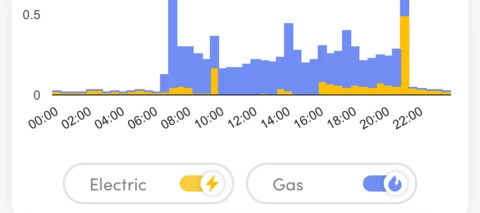- Forum
- Green tech & greener living
- Home and heating
Home and heating
Discussions around the latest home tech: solar, smart heat, battery storage & more
- 331 Topic threads
- 5,173 Comments
When you subscribe we will email you when there is a new topic in this category
331 Topic threads
VOU30Carbon Cutter****
Posted in Home and heating
skattieNew Member***
Posted in Home and heating
steevNew Member***
Posted in Home and heating
Nelertron1906New Member**
Posted in Home and heating
AdavisonCarbon Cutter****
Posted in Home and heating
eileanmorNew Member*
Posted in Home and heating
JohnnykissfmCarbon Cutter***
posted in Home and heating
Jeezeeh95Carbon Cutter***
Posted in Home and heating
cbjCarbon Cutter***
Posted in Home and heating
Alexandra001Carbon Cutter*
Posted in Home and heating
confusedCT5New Member**
Posted in Home and heating
miaowliciousCarbon Cutter*****
Posted in Home and heating
prbarberNew Member*
Posted in Home and heating
Heldav83New Member**
Posted in Home and heating
AstraroyCarbon Cutter***
Posted in Home and heating
Stuart gowNew Member*
Posted in Home and heating
BPLightlogPlan Zero Hero
Posted in Home and heating
tony.davies2Carbon Cutter*****
Posted in Home and heating
maxaretCarbon Cutter***
Posted in Home and heating
AlohaCarbon Cutter***
Posted in Home and heating
moira9bCarbon Cutter***
Posted in Home and heating
New to creating a topic?
The OVO Forum is powered by volunteers. Here are their top tips:
- Looking to get help from OVO? Contact our Support team here
- Search existing topics and check the Community rules before posting
- Please be respectful to others. Our members are other customers like you.
Need advice from other members?
Ask your question to our members - they have the experience you're looking for:
Ask our communityLog in to the OVO Forum
No account yet? Create an account
Enter your E-mail address. We'll send you an e-mail with instructions to reset your password.
Scanning file for viruses.
Sorry, we're still checking this file's contents to make sure it's safe to download. Please try again in a few minutes.
OKThis file cannot be downloaded
Sorry, our virus scanner detected that this file isn't safe to download.
OK









